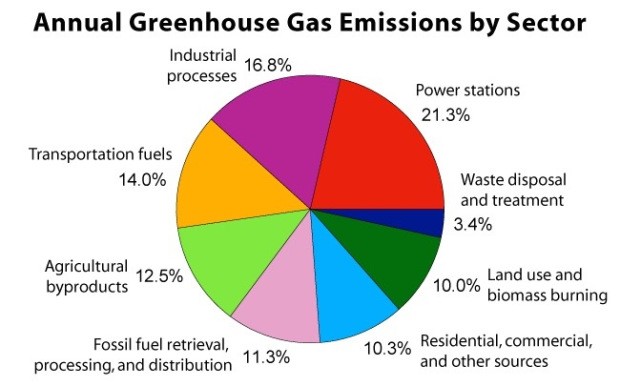Climate change is amongst the biggest challenges our global society is facing right now. Our exploitation of natural resources has brought us dangerously close to a point of no return. And one of the anthropocentric factors that heavily contribute to climate destruction is the extreme density and velocity of carbon dioxide (CO2) that gets released into the atmosphere to fuel human activities and several industries we have deemed necessary.
The top five largest carbon-emitting industries are energy production, transportation, industry, buildings, and agriculture, forestry and other land use (AFOLU). Following energy, the agriculture, forestry and other land-use sector is the second most destructive on the list. For AFOLU, the negative impact on the planet is two-fold. For an industry like transportation, for example, CO2 emissions mainly derive from the use of fuels. For agriculture and land-use, alongside the initial CO2 emissions, there’s also the case of the destruction of natural environments, and crucial ones at that, such as rainforests.
Rainforests, trees, are natural carbon offsetters. Through the process of photosynthesis, they balance the amount of carbon dioxide in the atmosphere. They’re also habitats for millions of living organisms, including humans who depend on forests for their livelihoods.

Every year, millions of trees are cut down and rainforests destroyed to clear up land to grow animal feed on and to provide the raw material for the timber industry. In the last 40 years, half of the world’s rainforests have been destroyed. We are literally killing the living things that protect our planet for no cost.
When you put it in these terms, cutting down trees sounds like a very dumb thing to do, doesn’t it? As we have less than 11 years to halt the destructive effects of the world’s climate getting hotter and hotter, what we need to be doing is to aim for more trees, and more crucially, protect the ones we have left.
This is exactly the mission of Cool Earth, a non-profit organisation that’s fighting deforestation. Cool Earth focuses on halting tropical deforestation since tropical rainforests have the highest density of carbon and their destruction can cause very large and rapid changes in carbon stocks in a very short amount of time.
The organisation has a community-owned and -led model. They work with local communities to achieve their mission because the people who live in tropical rainforest areas are the ones who suffer the most from deforestation, and the ones who benefit the most from rainforest protection. Cool Earth enables rainforest communities to protect their forests from threats like commercial lodging and agriculture.
Cool Earth doesn’t buy or own any land, they put the forests under the protection of indigenous people. The villagers make the calls and drive the partnership between themselves and Cool Earth. In the process, Cool Earth improves the health, well-being, income, and education of these communities.
So, Cool Earth empowers local communities and takes huge steps towards climate mitigation at the same time. Research shows that eight percent of global carbon emissions come from tropical deforestation, but halting deforestation won’t just reduce this number. The same rainforests can also provide 23 percent of the climate mitigation that we need before 2030 if we are to reach the goals set by the Paris Climate Agreement.
If you feel guilty by the number of flights you took this year (one flight from the UK to San Francisco would burn one’s entire annual carbon allowance) and want to do some carbon offsetting, consider donating to Cool Earth below. Instead of traditional carbon offsetting schemes, a donation to Cool Earth’s all-around efforts would save the lives of many birds, trees, and people in one stone.




